
The MAMbo, the Museum of Modern Art in Bologna, in collaboration with the Russian State Museum in St. Petersburg , hosts until 13 May 2108: Revolutija. From Chagall to Malevich, from Repin to Kandinsky . The focus of the review (over seventy works) is in the art of Russian avant-gardes. The curators want to deepen the period from the early twentieth century to the end of the thirties. And at the same time propose to the Italian public, insiders and non-known artists, such as Repin, Serov, Goncharova and Altman . Partly overshadowed by the great success achieved by Chagall, Malevic and Kandinsky , however present in the exhibition.
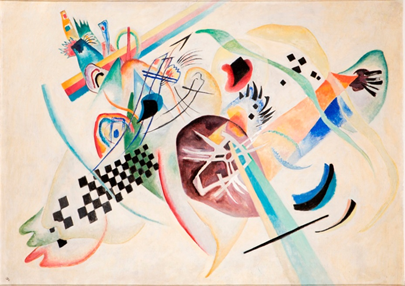
Kandinsky, on white (I), 1920
Let's start with Chagall . Many of his works emanate the joy of Matissian life. They are immersed in a dreamlike dimension, far removed from the scientific approach of the surrealist dream. On show we find the Promenade . A framework that challenges gravity to tell the happiness found by the artist close to his wife Bella. A fantastic vision set in the green countryside of Vitebsk. Chagall himself prevails at the center of the composition, with black and shiny shoes that are about to rise from the ground pulled towards the sky by his beloved, who gently grasps his hand.
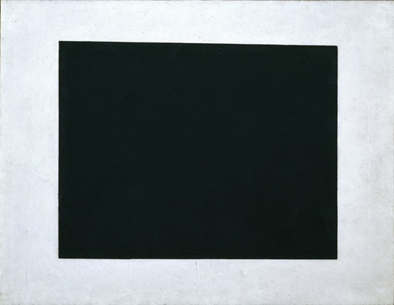
Malevic, black square. The first version dates back to 1915
The exposed painting by Kandinsky reflects the period in which the artist feels the need to reorganize, or if desired, "rationalize" the formal and chromatic aspects of some previous works. We find the geometric rationalistic motif of the black squares as if they were the parts of a chessboard that swarm towards the right side of the picture, at the top. The other strips still retain a certain vitality even if more muffled. The strictly black Square, Circle and Cross of Malevicthey are the first three monochromes at the origin of everything. At the origin of that supreme vision, passing through an absolute geometric simplification, considered icons of the twentieth century for that drastic and extreme act of definitive breaking of the idea of art as a representation and naturalistic imitation.

Malevic, the peasant's head
The phase of the gradual return to the figurative is also documented by Malevic. In "La testa di contadino" the net setting prevails at Leger. A square head, with a primitive syntax. Almost a mask, designed for red surfaces that section it. As far as I am concerned with the analysis of some works of the best known names, I would like to draw attention to a picture that struck me.
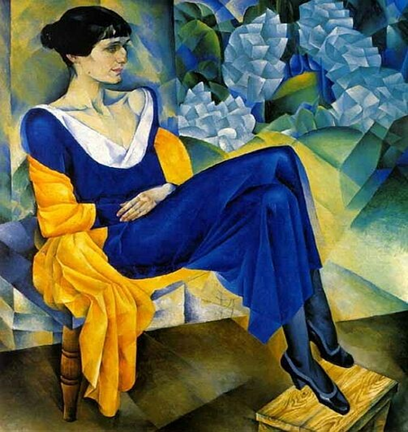
Nathan Altman, portrait of the poet Anna Akmatova, 1924
The portrait of the poet Anna Akmatova (1924) by Nathan Altman . Sitting as if in a throne, elegant measured refined, in the blue of the dress, in the theatricality of the yellow shawl that slides from the shoulders, in the black of the hair covering the forehead and framing the pointed face, we can imagine it in smiling waiting before declaiming his verses. "I drink in a destroyed house, in my unfortunate life, in solitudes lived in two", in the literary salons of St. Petersburg. Valentin Serov , known for his portraits of realism, in the "Portrait of the dancer Ida Rubinstein" (1910), instead adopts the symbolist style.
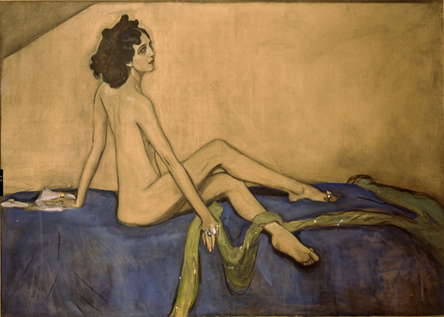
Valentin Serov, portrait of the dancer Ida Rubinstein, 1910
The body of the very thin androgynous androgynous woman depicted in three-quarters, painted in the same color as the background, looks at us sideways. Emphasize that only you know what lies behind the mysterious steps of a dance that is about to begin. I want to close this short review with Anna Goncharova's "Cyclist" of 1913 . It is clear to see the painting as the artist's reference points: cubism, futurism and the canons of the Russian avant-garde, in the insertion of the Cyrillic characters and numbers. So the decomposition of the movements of the protagonist follows both the pictorial techniques of Braque and Picasso and the dynamism typical of Giacomo Balla.
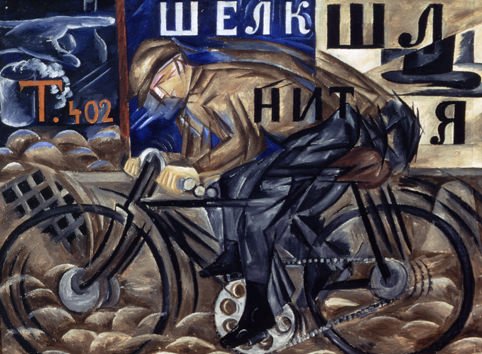
Anna Goncharova, cyclist, 1913